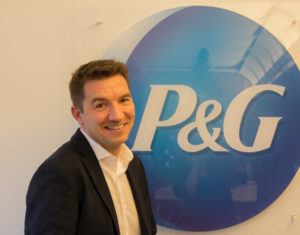HolyGrail is a collaborative effort designed to solve one of the largest obstacles facing plastic recycling – inefficient sorting at sorting and/or recycling facilities. In 2016, as P&G’s sustainable packaging expert, I worked with P&G to kick off a coalition of companies to pioneer HolyGrail in Europe under the Ellen MacArthur Foundation’s New Plastics Economy Pioneering Projects mantle. The project investigated how tagging of packages can have a drastic impact on more accurate sorting and high-quality recycling, either via digital watermarks or tracers embedded in the (plastic) packaging. Improved sorting can improve both the quality and quantity of recycled material on the market, which would mean more plastics go back to the marketplace and bring value instead of becoming waste. The outcome of this work was that the value chain has more interest for digital watermarks over tracers, as the former provides more value across the full life cycle of a package, including sorting/recycling.
Digital watermarks are imperceptible codes, the size of a postage stamp, covering the surface of a consumer goods packaging. They can carry a wide range of attributes such as manufacturer, SKU, type of plastics used and composition for multilayer objects, food vs. non-food usage, etc. The aim is that once the packaging has entered into a waste sorting/recycling facility, the digital watermark can be detected and decoded by a standard high-resolution cameras on the sorting line, which then – based on the transferred attributes – is able to sort the packaging into corresponding streams.
Over the past three years, P&G and its coalition partners have invested expertise and resources in the HolyGrail project to devise a more consistent and scalable tagging system across all packages. Historically, few companies have investigated their own unique marking solutions, but it is clear you need to move a whole ecosystem spanning the full supply chain. Project HolyGrail sought to solve this problem by paving the way for “intelligent sorting” at recycling facilities and ensuring the full value chain agrees on a technology standard (digital watermark technology).
The journey continues with HolyGrail2.0. I’m so pleased to be able to support AIM, the European Brands Association, as they bring together over 85 companies and organizations from the complete packaging value chain to advance this project. Together we have the ambitious goal to assess whether a pioneering digital technology can enable better sorting and higher-quality recycling rates for packaging in the EU, thus driving a truly circular economy. I’m proud to be providing leadership for this important program, and that P&G brands will support the next phase of the program.
“HolyGrail2.0” will take place on a much greater scale and scope. This will include the launch of an industrial pilot in order to prove the viability of digital watermarks technologies for more accurate sorting of packaging and higher-quality recycling, as well as the business case at large scale.
I’m excited to continue this work across the industry, putting these technologies into practice across more packages and more recycling facilities and believe we can achieve improved sorting and ultimately, less waste in our environment.
This blog was written and contributed by:
Gian De Belder
P&G Packaging Technologist and Chairman of Leadership Team HolyGrail 2.0 under AIM


